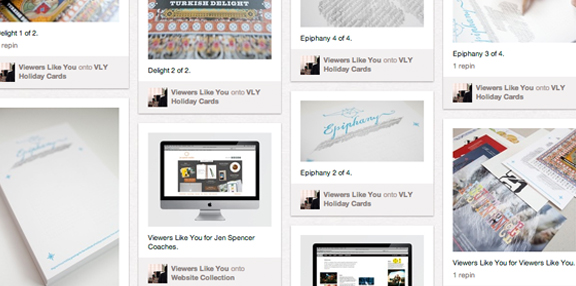
November 28, 2012
The Design Concierge
I am not really sure what inspired me to do so, but last week I set up a business Pinterest page. I created a few boards by categorizing examples from our portfolio. Easy stuff. You can check it out here. But first, stick with me a bit longer because this post isn’t about that.
Not having announced our page, I didn’t expect anything of it beyond the enjoyment of spending an hour or two revisiting past work and reminiscing about clients. But then we got our first follower. And they repinned nine of our projects. Some of our favorites too. What a thrill!
After I poked around on our follower’s Design Pinterest board, I saw that it was chock-full of work I admired. It felt fab to be placed in such good company. And I noticed something. Of all the projects we have up on our page, those chosen were ones we would categorize as having the least amount of client back-and-forth.
So what to make of that.
The repins all involved having ease with, and little imposition by, the client. Guided by the design brief and our initial conversations, all the projects repinned were our singular vision for the client—as opposed to, say, one of three options or a mish-mash of all. And four of the nine pins were self-promotions, where the luxury of efficiency and effectiveness reign.
Design sovereignty is actually something we have been thinking about as a studio lately—In the autonomy-sense of the word, and less so body politic.
While a client may want to see a variety of options to help them decide, when presented with multiple choices in design direction, we’re not addressing their needs but doing them a diservice. Presenting an array of ideas, then a series of rounds to be signed off on, we are inviting reinvention at every turn. Regardless of our best intentions, and contrary to conventional logic, we are setting the stage for client dissatisfaction. This paradox of choice fascinates me. From the book of the same name: “We assume that more choice means better options and greater satisfaction. But beware of excessive choice: choice overload can make you question the decisions you make before you even make them, it can set you up for unrealistically high expectations, and it can make you blame yourself for any and all failures.” Or more likely, blame the designer.
Viewers Like You has recently created a proprietary framework where the maximum freedom for us to Design is emphasized and—by removing the burden of choice—delivers a luxury experience for our client. We believe our new designer-client model will procure the most resonate, strategic and provocative brand assets for our clients to date.
Next week we begin a project, with a brave and bold client, where after a comprehensive and intimate month of exploration, we will conceive, create, develop and bring live a new brand identity and home—and without her having to decide a thing. Notaone.
It’s called The Design Concierge. And I trust you’ll soon be repinning the results of this unique collaboration.
:::::
If you are interested in learning more about The Design Concierge, or any of our engagements, → this is the way there.